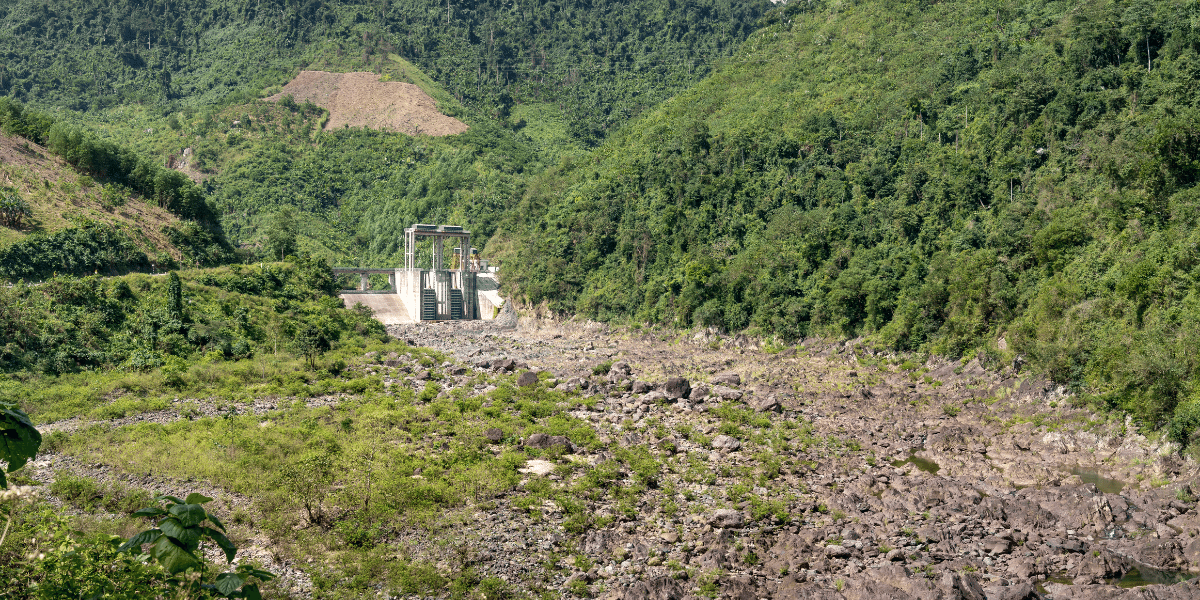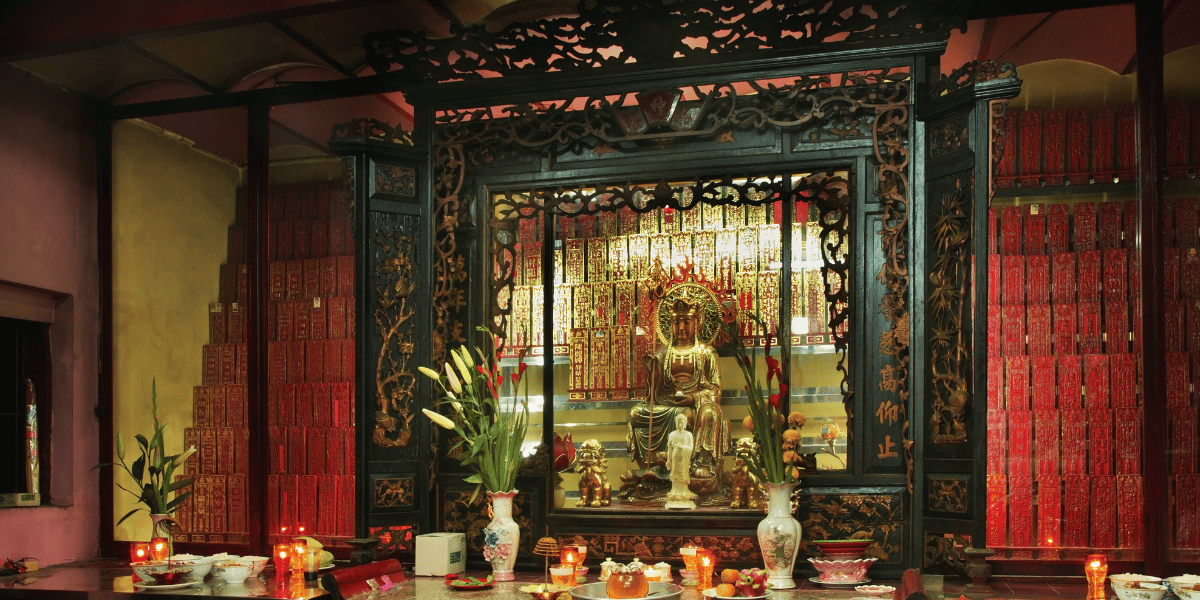Ba Be Lake and National Park: A Pristine Haven of Biodiversity in Vietnam
Last Updated on 29 August, 2024 by admin
Ba Bể Lake and Ba Bể National Park are located in the northern region of Vietnam, nestled within the rugged mountains of Bắc Kạn Province. This area is renowned for its breathtaking natural beauty, featuring lush forests, limestone cliffs, and the expansive freshwater lake that forms the heart of the park. Ba Bể is not only a haven for nature lovers but also a region of significant biodiversity and cultural importance. The park is home to a diverse array of plant and animal species, as well as several ethnic minority communities who have preserved their traditional ways of life for centuries. Ba Bể Lake stands out as a must-visit destination for those seeking to explore the unspoiled landscapes of Vietnam and immerse themselves in the tranquillity of nature.
Ba Bể Lake – The Gem Amidst the Mountains
Ba Bể Lake, often referred to as a gem nestled amidst the towering mountains of northern Vietnam, is a sight to behold with its crystal-clear waters, small islets, and cascading waterfalls. The lake, which stretches over 8 kilometres in length, is surrounded by lush forests and dramatic limestone cliffs that rise majestically from the water’s edge. The serene beauty of Ba Bể is only enhanced by the mist that often hovers over the lake in the early morning, creating an almost otherworldly atmosphere. Legend has it that the lake was formed when a great flood submerged a valley, and the only survivors were a few families who had been given a magical rice grain by a mysterious old woman. This legend adds an air of mystery and allure to the already enchanting landscape.

Visitors to Ba Bể Lake can engage in a variety of activities that allow them to fully appreciate its natural splendour. Kayaking across the calm waters offers an intimate way to explore the lake, taking you close to the small islands and hidden coves. For those who prefer a more relaxed experience, boat tours are available, providing panoramic views of the surrounding mountains and the chance to see local wildlife. Swimming in the clear, refreshing waters of Ba Bể is a delight, especially during the warmer months, while fishing offers a peaceful pastime amidst the tranquil scenery.
During my visit to Ba Bể, I spent an unforgettable afternoon kayaking around the lake, marvelling at the untouched beauty of the landscape. The experience of gliding over the still waters, with the sounds of nature all around, was both calming and exhilarating. The combination of the lake’s natural beauty and its cultural legends makes Ba Bể a truly unique destination, one that stays with you long after you’ve left.
Ba Bể National Park – A Sanctuary of Biodiversity
Ba Bể National Park is a sanctuary of remarkable biodiversity, preserving an array of rare flora and fauna within its lush, ancient forests. The park is a vital conservation area, home to over 1,000 plant species and numerous wildlife species that are increasingly rare in the wild. The park’s dense, primary forests are teeming with life, providing a habitat for a variety of mammals, birds, reptiles, and insects. Among the most notable inhabitants are the Tonkin snub-nosed monkey, a critically endangered primate with a distinctive upturned nose, and the Asiatic black bear, known for its unique crescent-shaped chest mark. The park is also home to elusive species such as the clouded leopard and various species of birds that fill the forest with their songs.
Visitors to Ba Bể National Park can immerse themselves in nature through various activities designed to explore its rich ecosystems. Hiking through the forest trails is a popular way to experience the park’s diverse landscapes, from lowland forests to karst formations. For those seeking more of a challenge, the park offers opportunities for mountain trekking, where the reward is breathtaking views of the surrounding valleys and peaks. Camping within the park allows visitors to fully connect with nature, surrounded by the sounds of the forest and under a sky filled with stars.

In addition to its natural wonders, Ba Bể National Park is also a cultural treasure, home to several ethnic minority villages. A visit to these villages provides a unique insight into the traditional lifestyles and customs of the local communities, who have lived in harmony with the forest for generations. During my trek through the park, I had the chance to meet some of the villagers, learning about their way of life and even participating in a traditional meal. The experience of walking through this pristine environment, coupled with the warm hospitality of the local people, made my visit to Ba Bể National Park both enlightening and unforgettable.
Distinctive Culture of the Ethnic Minority Communities
Ba Bể National Park is not only a natural treasure but also a cultural one, home to a vibrant tapestry of ethnic minority communities, including the Tày, Nùng, and Dao people. These groups have lived in the region for centuries, preserving their unique customs, traditions, and way of life. The Tày people, the largest ethnic group in the area, are known for their distinctive stilt houses, which are constructed from wood and bamboo and blend seamlessly into the natural surroundings. The Nùng and Dao communities are also deeply rooted in the region, each with their own rich cultural heritage.
The cultural practices of these communities are reflected in their traditional clothing, which is often handwoven and intricately embroidered with patterns that tell stories of their ancestry and beliefs. Their cuisine is another highlight, featuring dishes that make use of local ingredients, such as thịt lợn cắp nách (a type of pork dish), sticky rice, and various types of wild vegetables and herbs. Festivals are central to the cultural life of these communities, with events like the Long Tong festival, a traditional Tày celebration to pray for a bountiful harvest, showcasing vibrant dances, music, and rituals.
Visitors to Ba Bể have the unique opportunity to immerse themselves in the local culture by participating in various activities with the villagers. This can include learning about traditional crafts such as weaving and bamboo working, or joining in on agricultural activities that have been passed down through generations. Sharing a meal with a local family offers a taste of the region’s authentic cuisine, prepared with ingredients sourced directly from the surrounding environment. During my visit, I had the privilege of staying with a Tày family in their stilt house, where I was warmly welcomed and invited to take part in their daily routines. The experience was deeply enriching, providing not just a glimpse into their way of life, but also a lasting connection with the people who call this beautiful region home.
Useful Travel Information
Best Time to Visit
The ideal time to explore Ba Bể Lake and Ba Bể National Park is during the dry season, which runs from October to April. During these months, the weather is cool and pleasant, with minimal rainfall, making it perfect for outdoor activities such as hiking, boating, and cultural exploration. The dry season also ensures that the trails are more accessible, and the clear skies provide stunning views of the surrounding landscapes.
Getting to Ba Bể Lake and Ba Bể National Park
Ba Bể Lake and the national park are located in Bắc Kạn Province, about 240 kilometres north of Hanoi. The most convenient way to reach the area is by road. You can take a bus or a private car from Hanoi, with the journey typically taking around 5-6 hours. Buses to Bắc Kạn are available from major bus stations in Hanoi, such as Mỹ Đình or Gia Lâm, and from Bắc Kạn, you can hire a taxi or a motorbike to reach the park. For those seeking more comfort and flexibility, arranging a private car or tour from Hanoi is a popular option, allowing you to stop at scenic spots along the way.
Accommodation Options
There are various accommodation options near Ba Bể Lake to suit different preferences and budgets. For those seeking an authentic experience, homestays with local families are highly recommended. Staying in a traditional stilt house offers a unique opportunity to immerse yourself in the local culture, with the added bonus of enjoying home-cooked meals featuring regional specialties. There are also several guesthouses and eco-lodges in the area that provide basic but comfortable lodging, often with beautiful views of the lake or surrounding forests. These accommodations typically offer amenities such as hot showers, Wi-Fi, and guided tours of the park.
Travel Tips
When visiting Ba Bể, it’s important to be mindful of the environment and the local culture. The park is a protected area, so take care to follow designated trails, avoid littering, and minimize your impact on the natural surroundings. It’s also essential to respect the customs and traditions of the ethnic minority communities. Dress modestly, particularly when visiting villages and religious sites, and always ask for permission before taking photos of local people or their homes. Engaging with the local culture in a respectful manner not only enriches your experience but also helps to preserve the unique heritage of the region.
By following these tips and being prepared, you’ll be able to fully enjoy the natural beauty and cultural richness of Ba Bể Lake and Ba Bể National Park, making your visit a memorable and meaningful adventure.
Conclusion
Ba Bể Lake and Ba Bể National Park stand as a testament to Vietnam’s incredible natural beauty and rich cultural heritage. This unique destination, with its crystal-clear waters, lush forests, and vibrant ethnic communities, offers a rare glimpse into a world where nature and tradition coexist harmoniously. The park’s status as a biodiversity hotspot underscores its value as a conservation area, preserving not only the diverse plant and animal life but also the traditional ways of life that have thrived here for centuries.
Visitors are encouraged to come and explore the wonders of Ba Bể, where each experience—from trekking through ancient forests to sharing a meal with a local family—reveals the depth and richness of this extraordinary region. However, as tourism grows, it is crucial that we approach it with a commitment to protecting the environment and respecting the cultural integrity of the local communities. Sustainable tourism practices are key to ensuring that Ba Bể remains a pristine and welcoming destination for future generations to enjoy. By visiting with care and consideration, you contribute to the preservation of this natural and cultural treasure, ensuring its beauty and significance endure for years to come.




